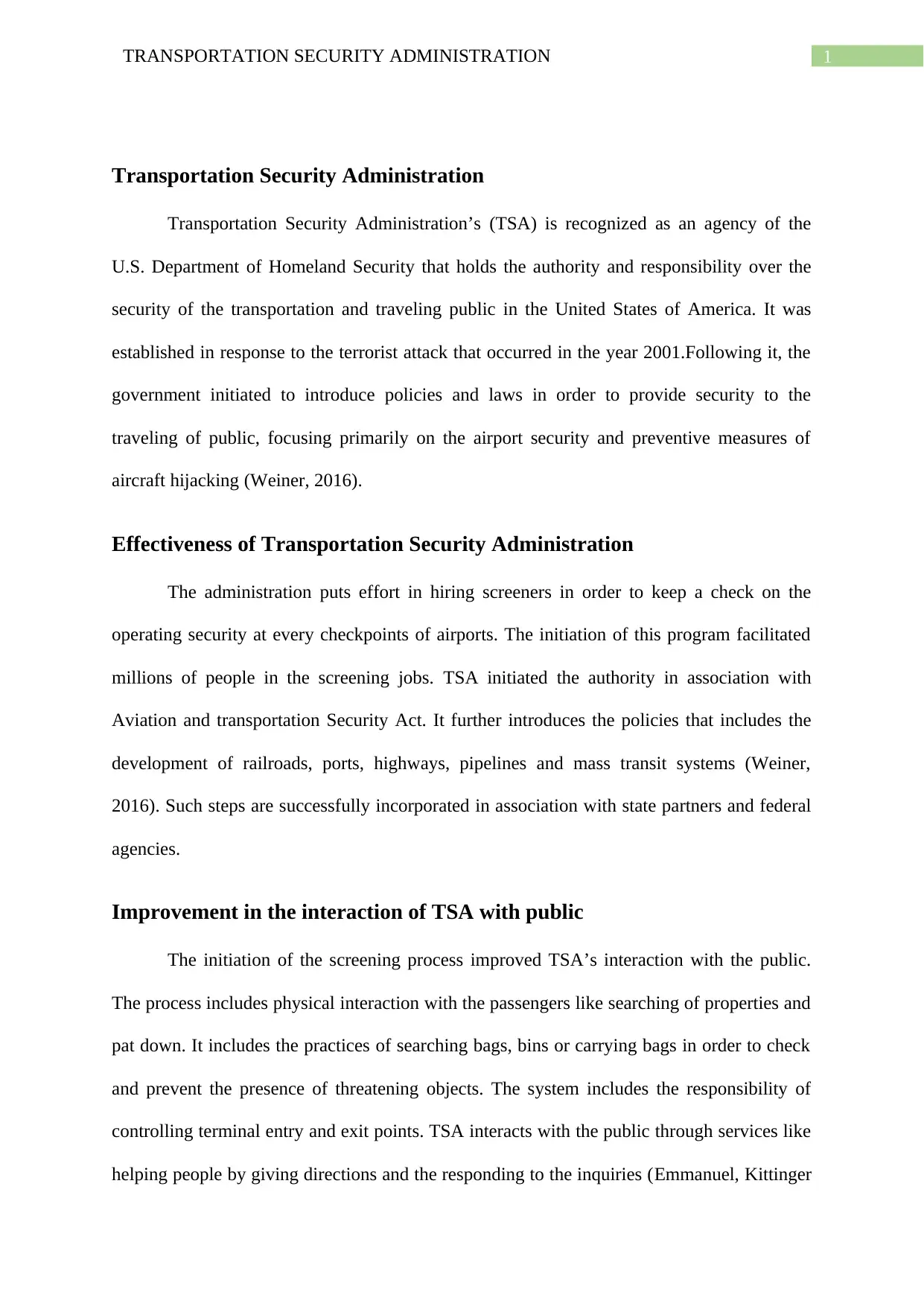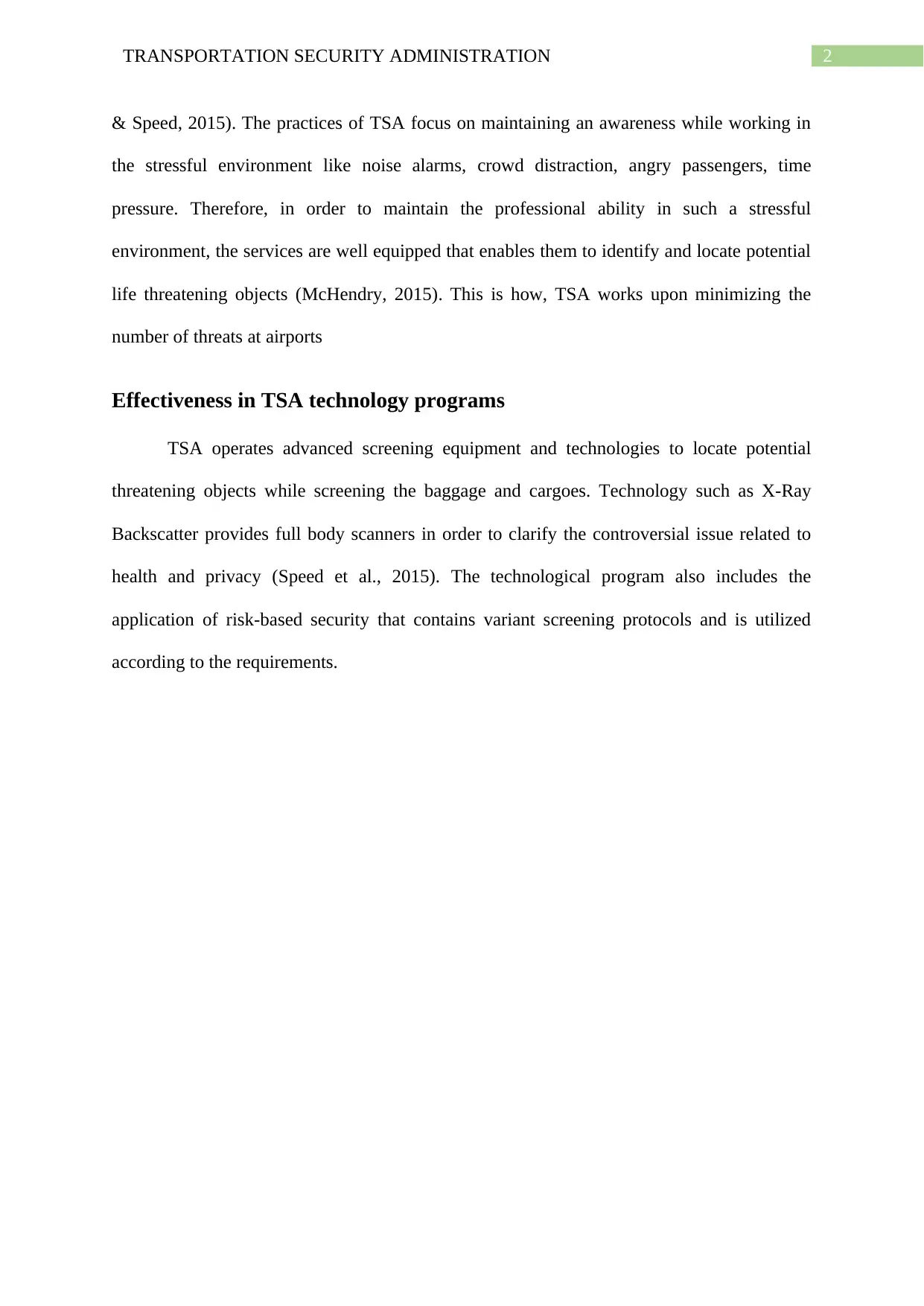TSA Report: Effectiveness, Technology, and Public Interaction
VerifiedAdded on 2022/08/12
|4
|657
|20
Report
AI Summary
This report provides an overview of the Transportation Security Administration (TSA), focusing on its operational effectiveness, technological advancements, and interactions with the public. The report begins by establishing the TSA's role as a U.S. Department of Homeland Security agency responsible for securing the transportation and traveling public. It then examines the TSA's screening processes, including the use of screeners and the implementation of various security measures at airports and other transportation hubs. The report highlights the use of advanced screening equipment and technologies like X-Ray Backscatter and risk-based security protocols. Furthermore, it discusses the TSA's interaction with the public, including services like providing directions and responding to inquiries. The report also references several academic sources to support its analysis of the TSA's operations and impact.
1 out of 4






![[object Object]](/_next/static/media/star-bottom.7253800d.svg)